The matchup between Aston Villa and Arsenal was expected to be a wide-open affair. Aston Villa and Arsenal are the bottom two teams in shots per game against. Aston Villa gives up 18.5 shots per game and Arsenal clocks in at 18.3 shots against per game. The wide-open action was compounded by a first-half red card to Arsenal right-back Ainsley Maitland-Niles. The wild match ended with the 10 men Arsenal clawing back from a 2-1 deficit to snatch the late 3-2 win.
This tactical analysis will provide an in-depth analysis of the tactical cause of Arsenal getting caught in end-to-end matches. Arsenal is giving up four more shots than they take per match. This analysis will focus on Unai Emery’s intentional tactic of pushing both full-backs into the attacking third and using their midfielders to cover these wide spaces.
Lineups
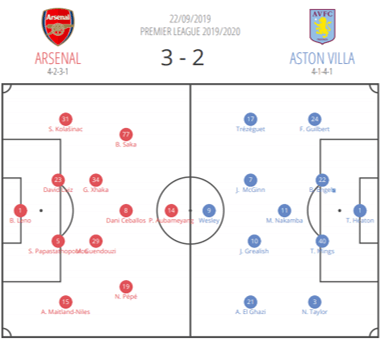
Aston Villa lined up for the match in a 4-1-4-1 formation. Tom Heaton in goal with a back four of Frédéric Guilbert, Björn Engels, Tyrone Mings, and Neil Taylor. Marvelous Nakamba sat in front of the back four with John McGinn and Jack Grealish in central midfield. Mahmoud Trezeguet and Anwar El Ghazi were the wide attackers and Wesley the target forward.
Arsenal countered with a 4-2-3-1 alignment. Bernd Leno was in goal and the back four consisted of Sead Kolašinac, David Luiz, Sokratis, and Ainsley Maitland-Niles. Granit Xhaka and Mattéo Guendouzi anchored the midfield with Dani Ceballos playing a more attacking role. The front-line trio was Nicolas Pépé, Pierre-Emerick Aubameyang, and Bukayo Saka.
Following the first-half red card to Maitland-Niles, Callum Chambers came in for Saka. Chambers slotted into the right-back slot and Arsenal went with a 4-2-1-2 alignment.
Arsenal Vulnerability to the Counter Attacks
According to WyScout, Arsenal is giving up 3.67 counter attacks per match and an astounding 45.5% of those counter-attacks are ending up in shots. Compare this to Liverpool giving up 2 counter attacks a match with only 16.5% ending as shots. Manchester City and Tottenham Hotspur both give up 3.17 counter attacks per match but only 26.2% and 31.5% end up as shots respectively.
A large reason for Arsenal matches being wide-open shot fests lies in the ease for opponents to counter-attack and convert the counter into shots. The Arsenal counter-attacking defensive profile aligns more closely with Aston Villa than any top 6 squads. Aston Villa gives up 4.17 counter attacks per match with 55.9% ending in a shot. Arsenal and Aston Villa defensive counter-attacking statistics look similar to each other and nothing like that of Liverpool, Manchester City, or Tottenham.
How are the Counter Attacks Occurring
A common tactical theme for Arsenal is pushing both full-backs into the attacking third- Kolašinac and Maitland-Niles were consistently both pushed forward against Aston Villa.
The following sequence shows an Arsenal attack followed by an Aston Villa counter. Below Geundouzi passes the ball forward to Ceballos. Note the midfield trio along the sideline with the full-back Maitland-Niles pushed ahead of them.
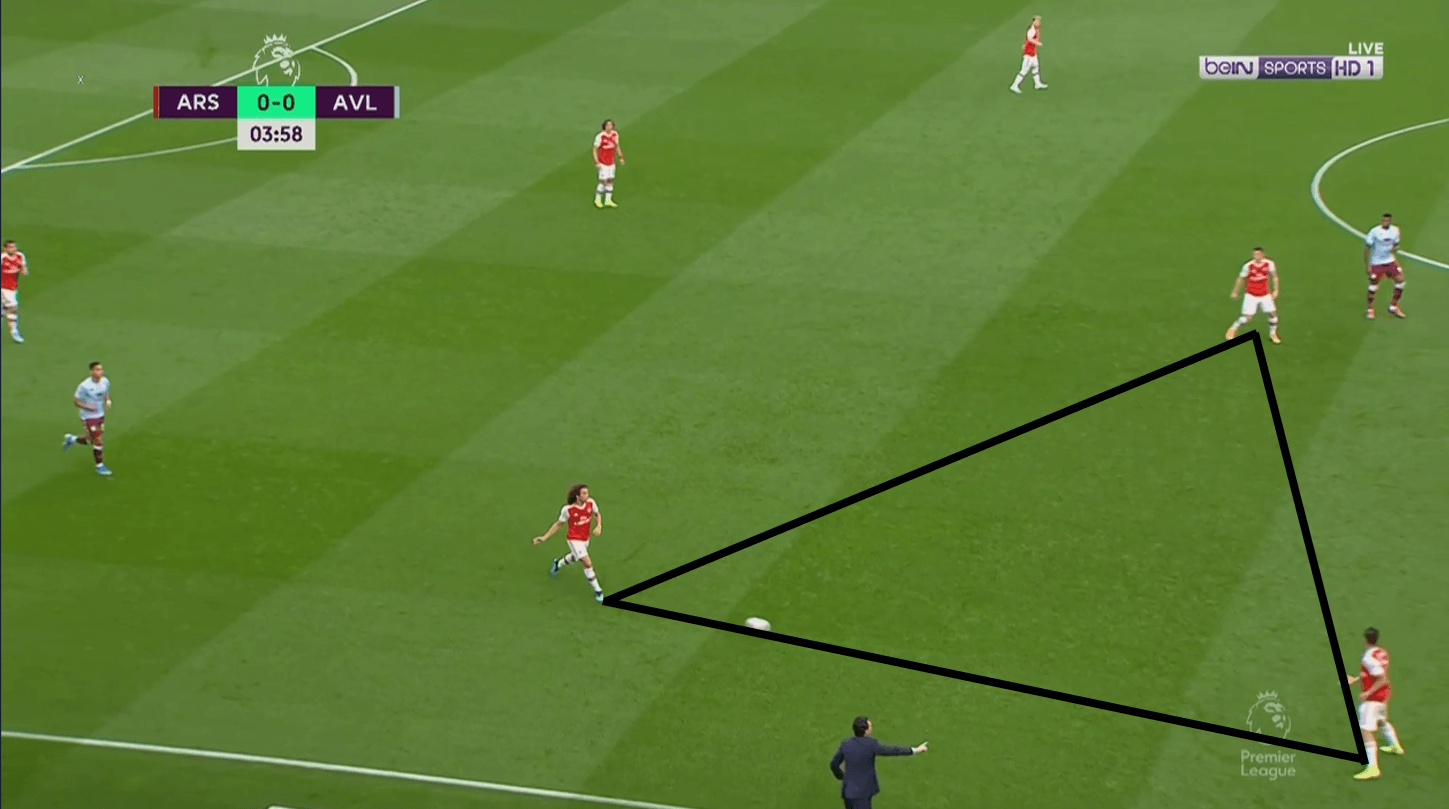
Ceballos turns and plays into the half-space to the feet of Pépé. Maitland-Niles overlaps as Pépé attacks inside with the ball.
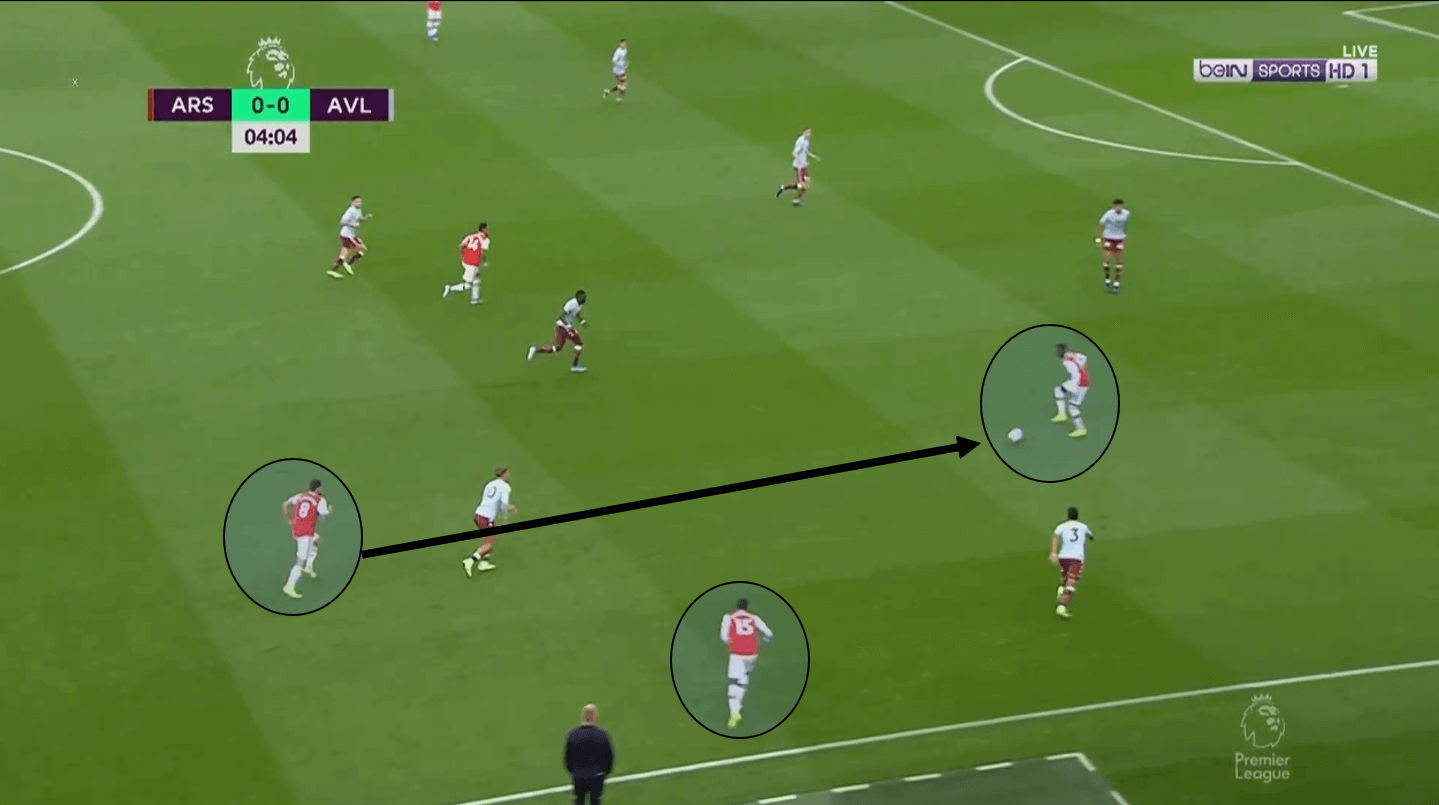
Pépé loses the ball to Aston Villa and we can clearly see how Arsenal are being shredded on the counter-attack. The Aston Villa defender makes a pass into midfield and Aston Villa is away.
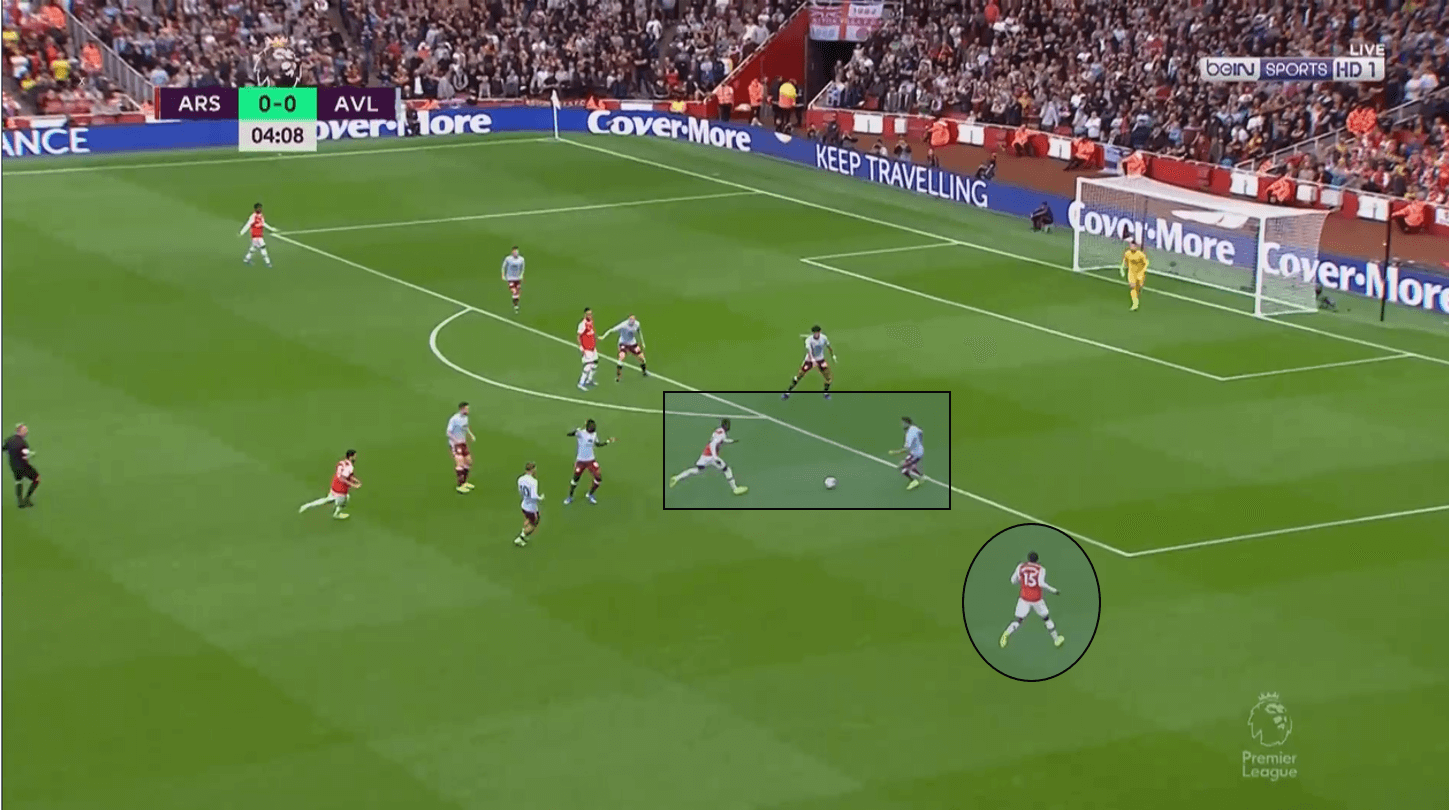
John McGinn receives the pass in midfield and Aston Villa counter at speed. The image below shows five Arsenal players left behind. That should mean that Arsenal have six players to stop the counter, but they are so poorly positioned that Aston Villa slice right through.
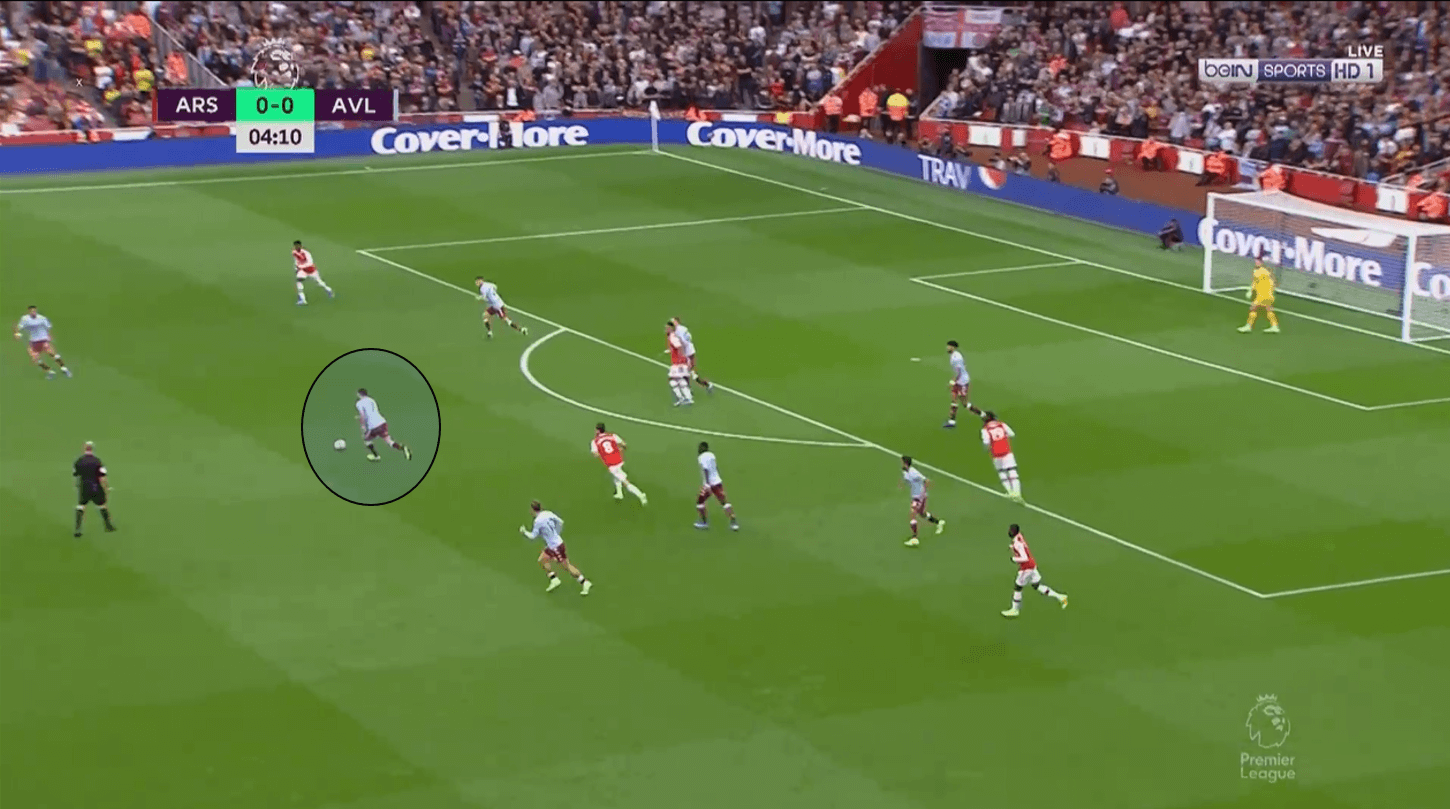
McGinn still on the ball draws both left-back Kolašinac and midfielder Xhaka. Note that Maitland-Niles shown in the box is behind the play and McGinn is free to play a simple diagonal ball to Grealish.
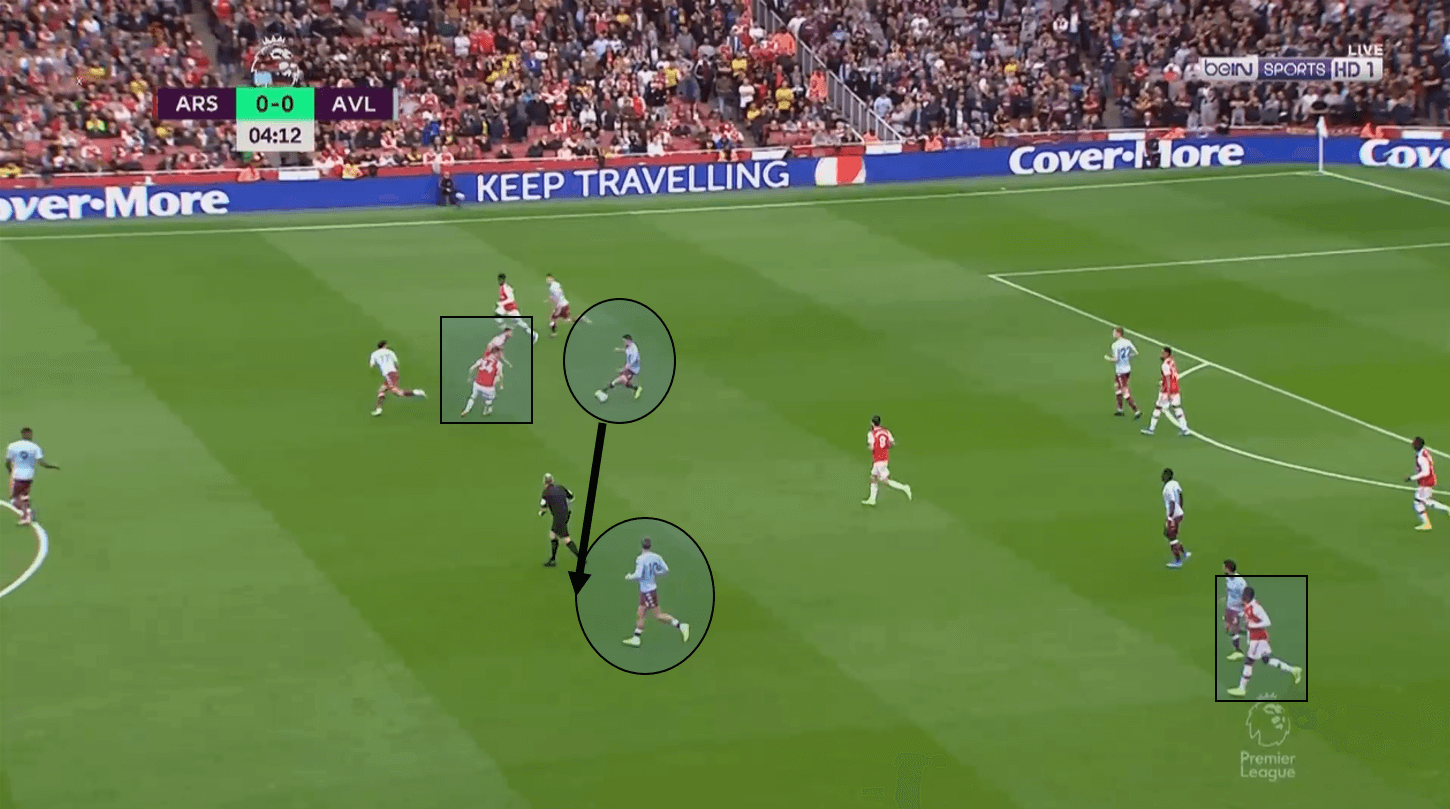
Grealish simply turns upfield with no central resistance from Arsenal. Both wide defenders are highlighted as they are well behind the play.
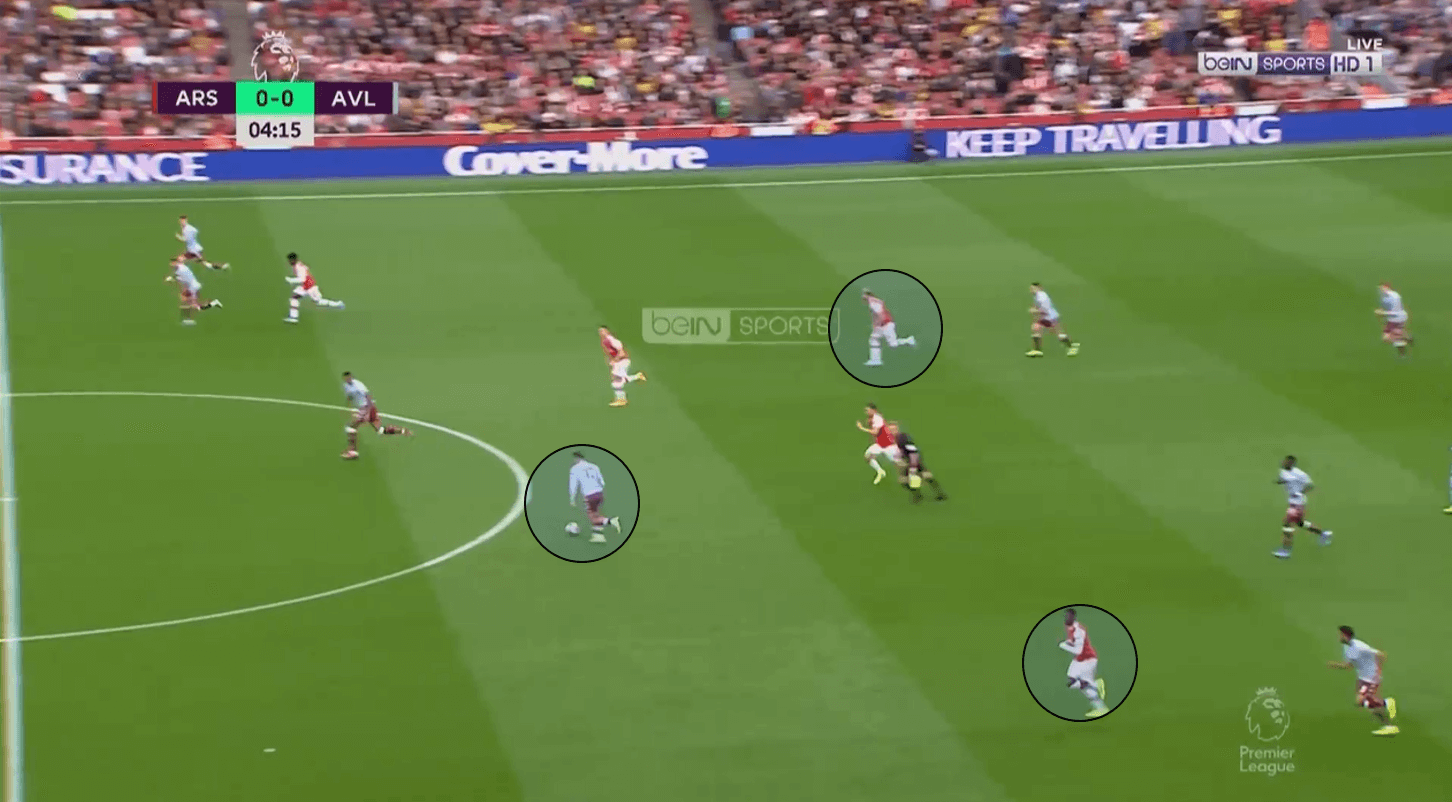
Emery insists on a tactic having a midfielder drop into the outside back slot to cover for the attacking full-backs. Here we see an abundance of central space for Grealish as Guendouzi is stuck tracking El Ghazi.
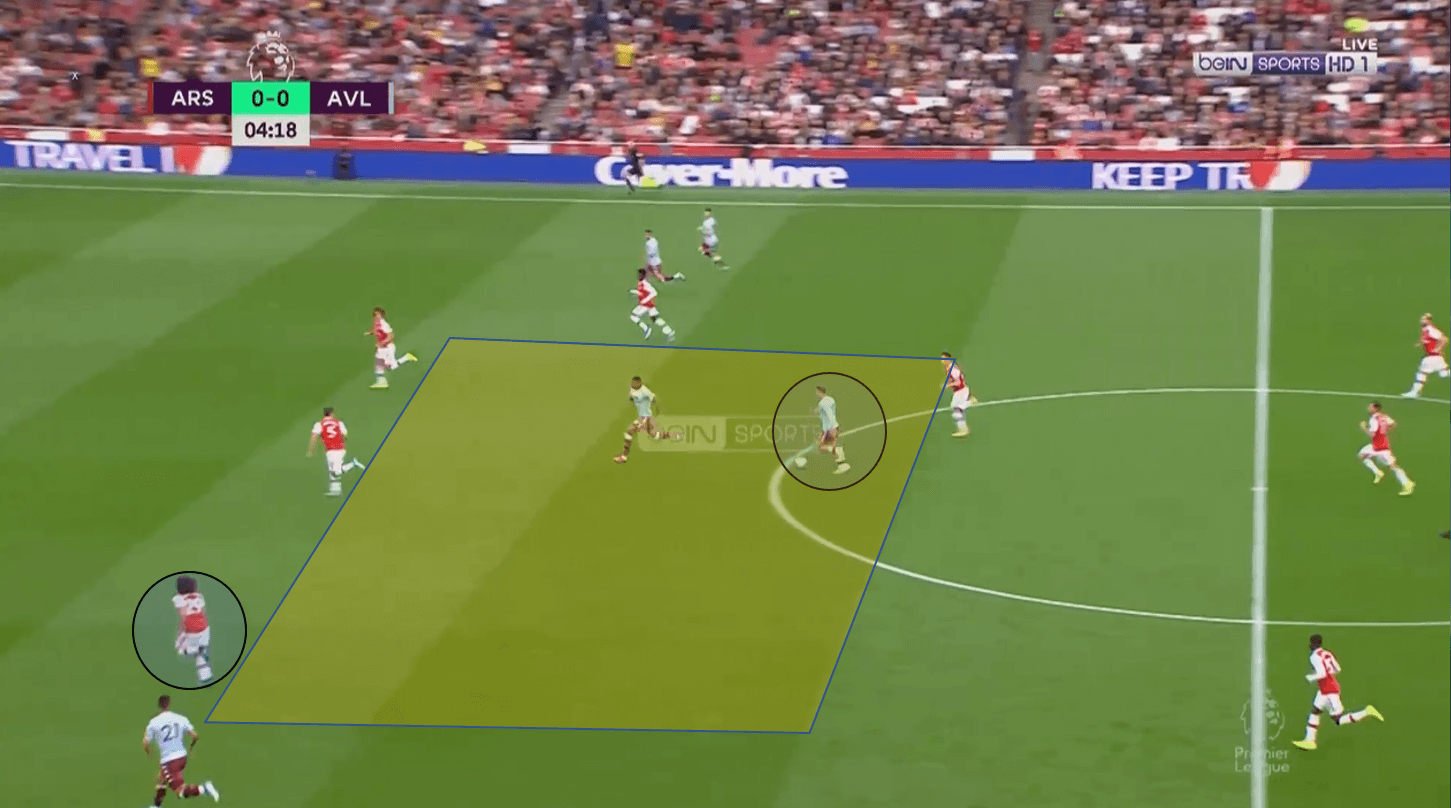
The previous sequence shows a five versus four counter-attack for Aston Villa. The four players for Arsenal are the two centre-backs, Guendouzi as a right-back and winger Saka covering at left-back. End to end action ensues as the centre of the pitch is not defended due to the need to cover for both wide defenders going forward.
Down to 10 men
Once Maitland-Niles was sent off, Arsenal brought on Chambers for Saka. The resulting formation was a 4-2-1-2. The midfield structure remained the same and the tactic of throwing both wide defenders forward also stayed the same.
The next sequence shows Arsenal with a solid build-up. Xhaka is on the ball and releases play with a diagonal ball through midfield.
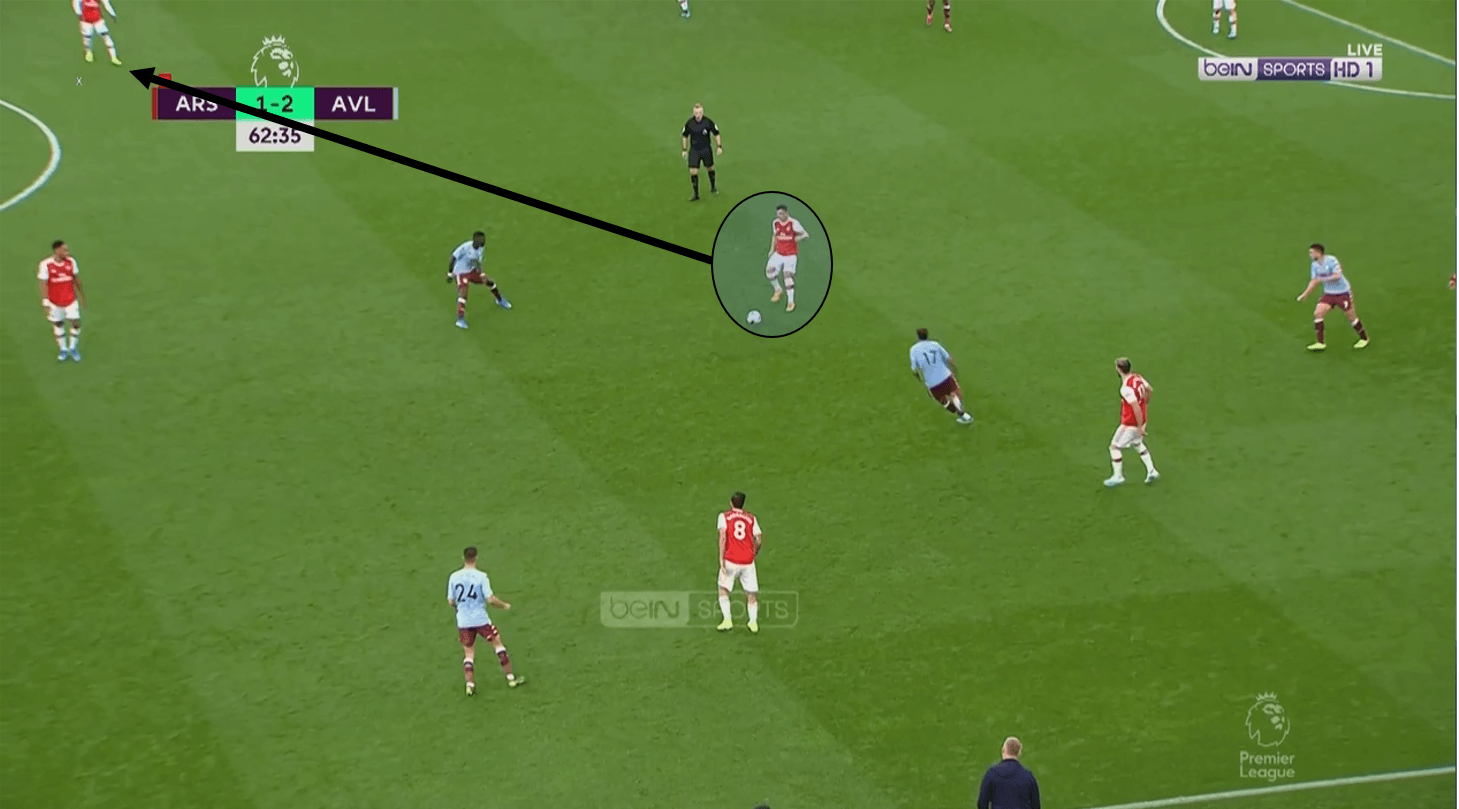
Arsenal make a concerted effort to get forward with only Aubameyang ahead of the ball, while Guendouzi is on the right, Xhaka positioned centrally, and Ceballos and Kolašinac getting forward on the left.
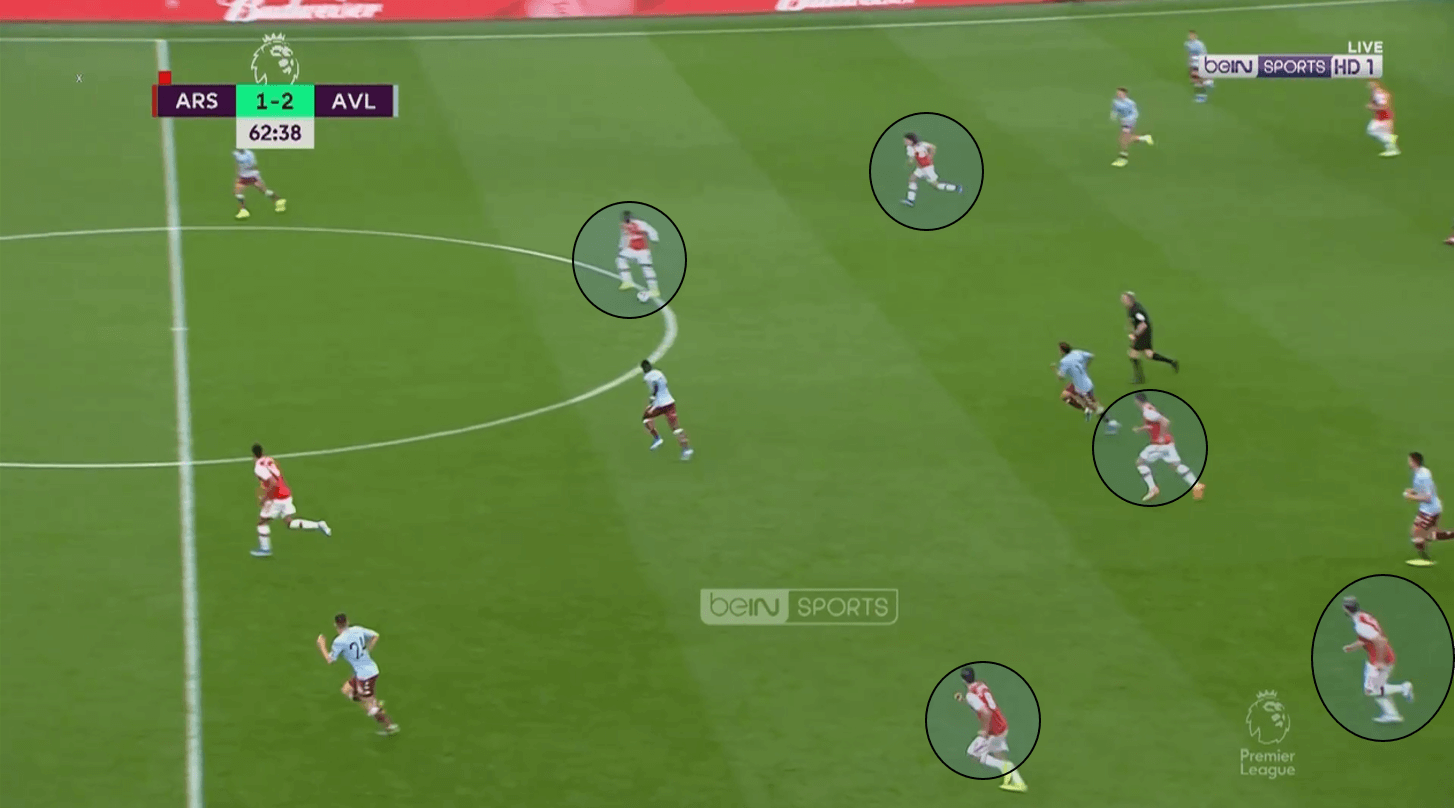
The ball gets switched to Ceballos who loses out to Aston Villa. Kolašinac is forward along with Xhaka and Guendouzi, so there is no balance to prevent a counter centrally.
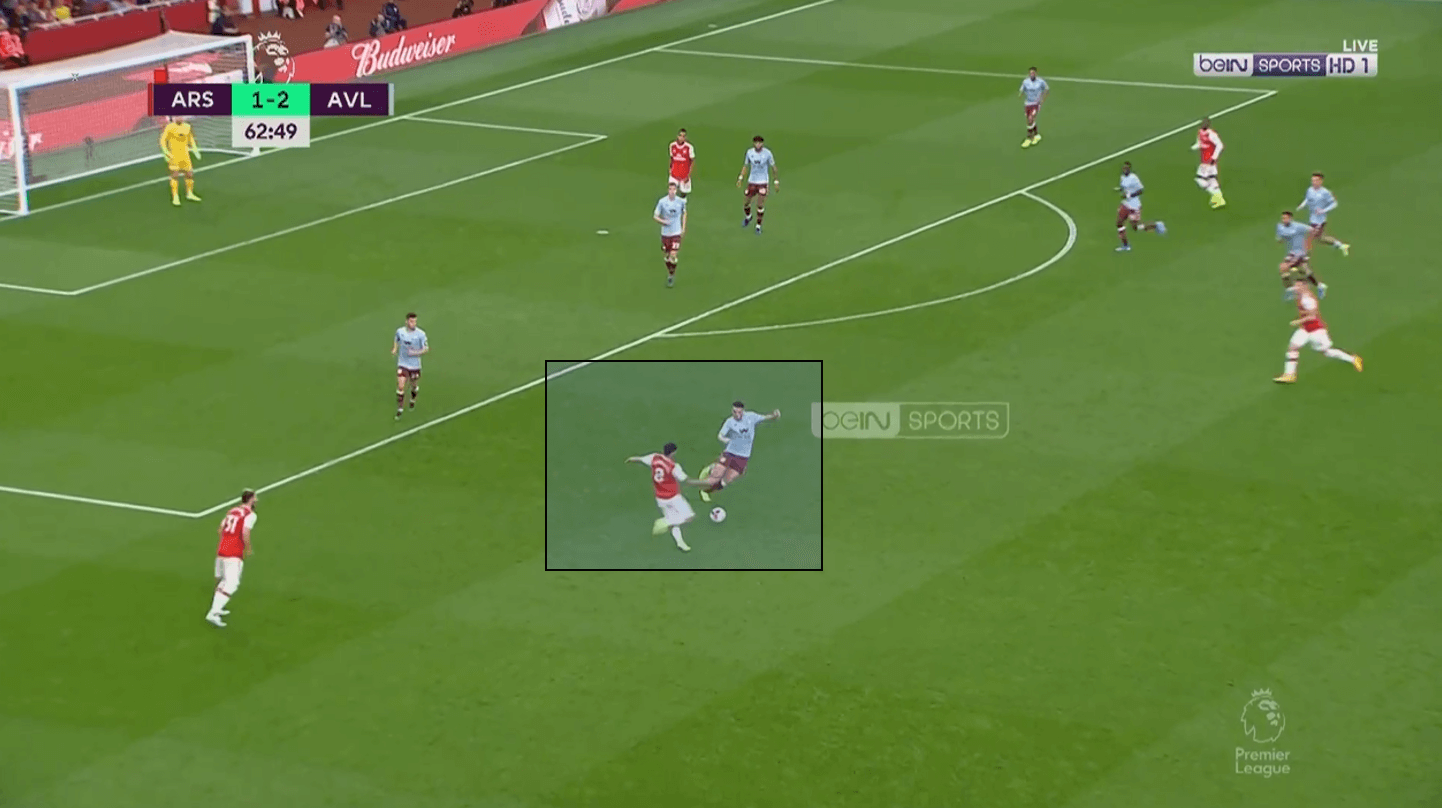
With the entire midfield forward, there is no Arsenal player available to provide any resistance to Aston Villa.
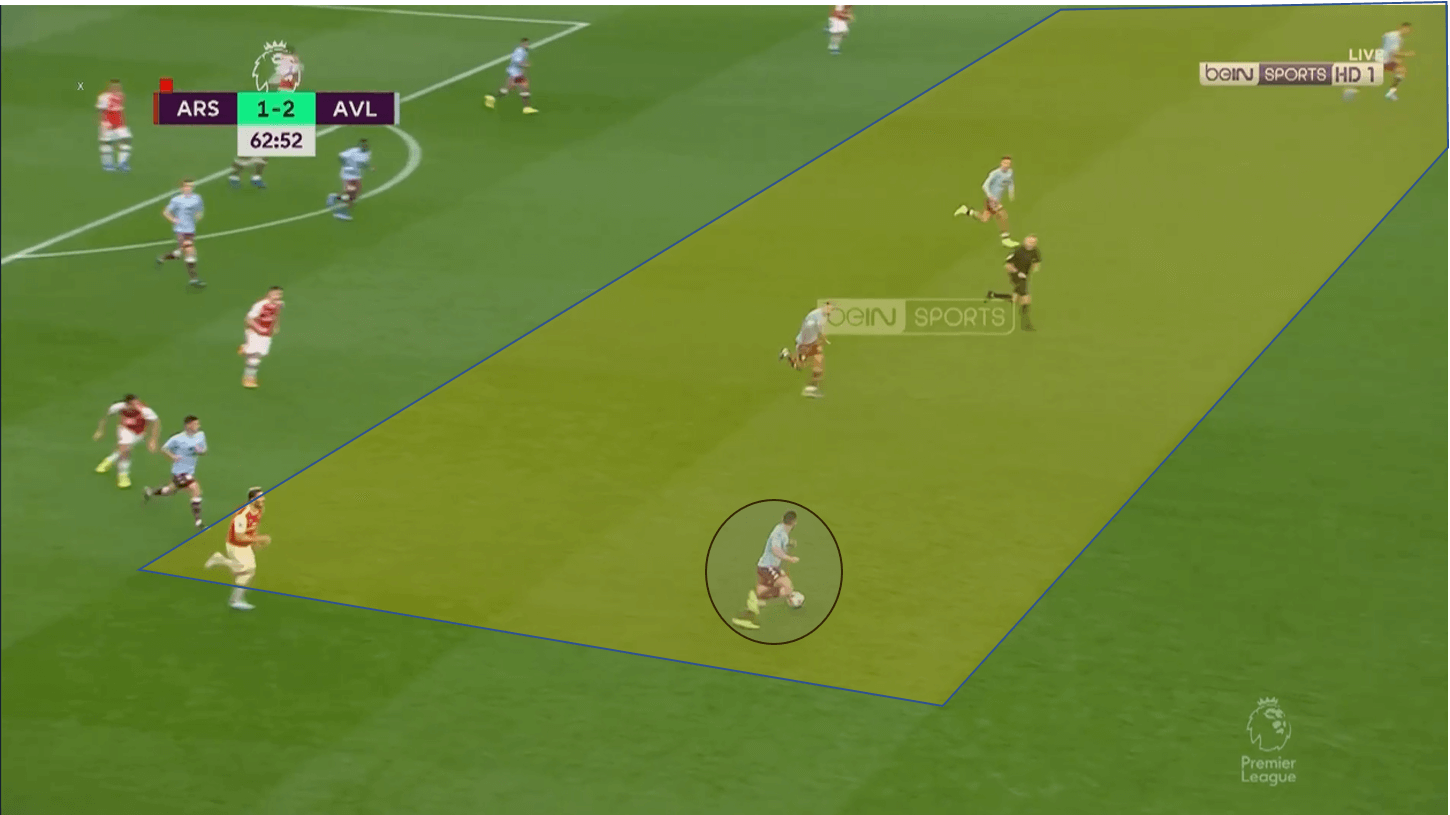
Aston Villa ends up with a four versus three counter-attack. Again, the Arsenal defence is flat and have no players at all in midfield. Grealish is free to run at the defence with three options in front of him.
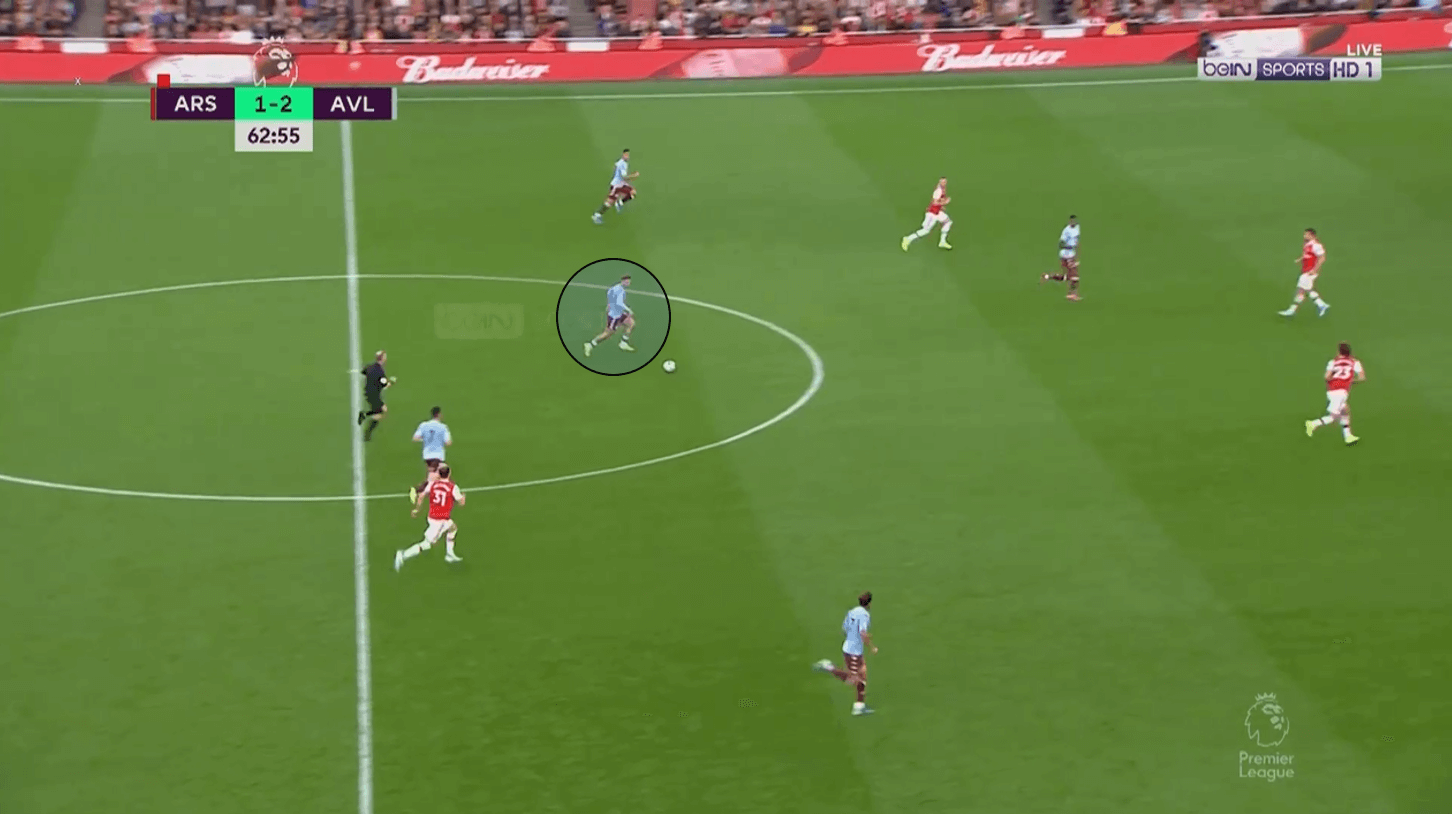
Once at the top of the box, Grealish is free to play in Trezeguet.
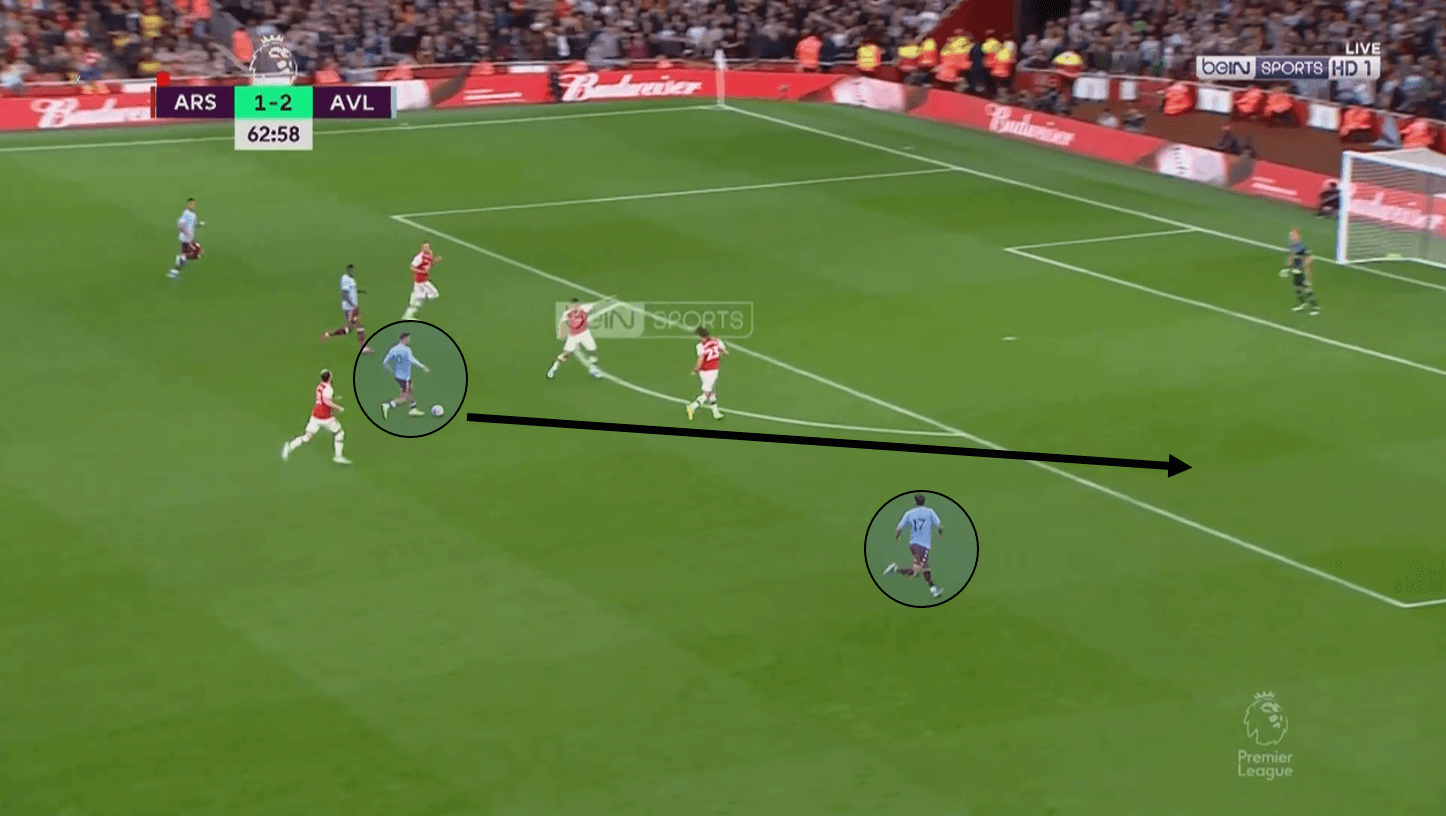
Trezeguet has a clear shot with little defensive pressure.
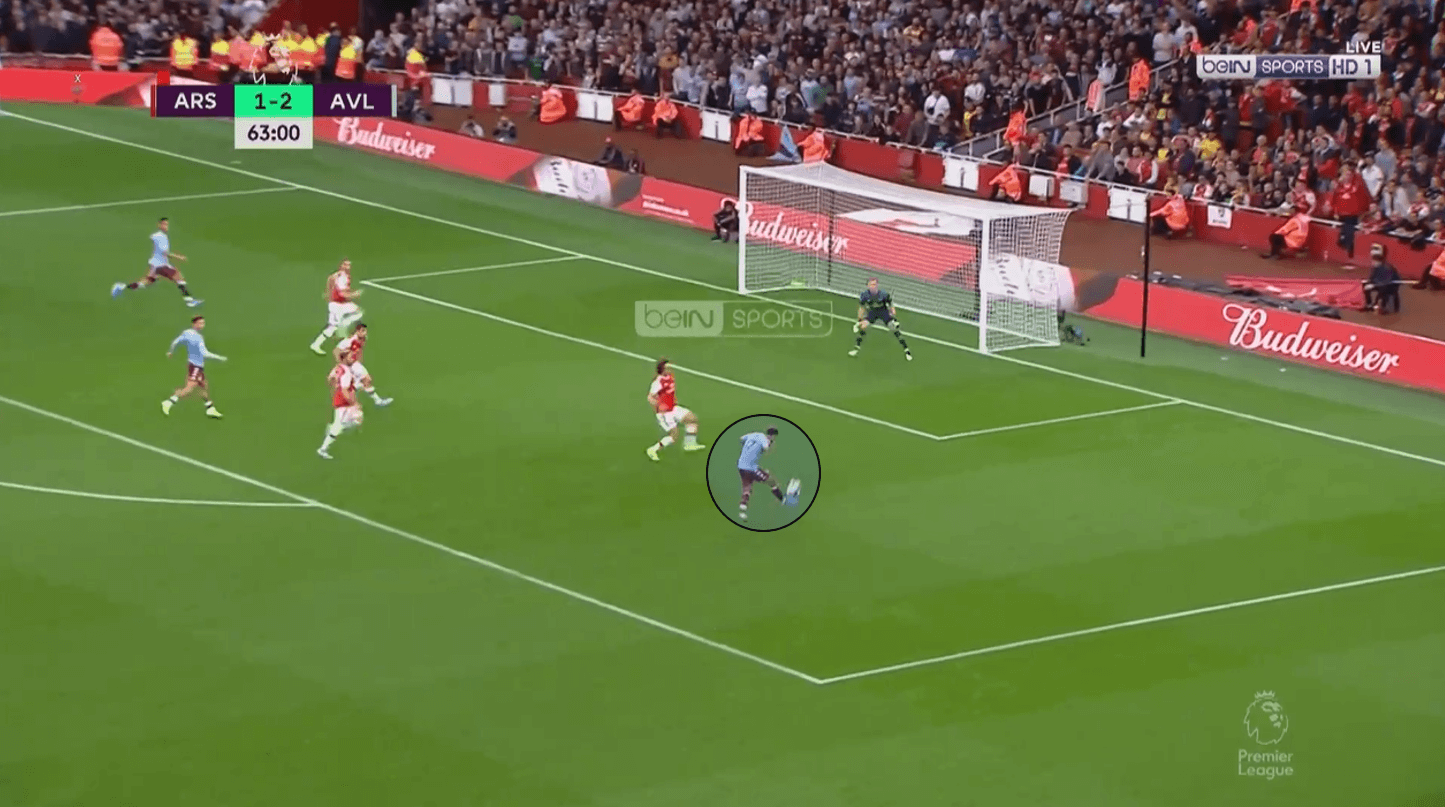
Conclusion
As Arsenal was pushing the play to get a goal back while being down to 10 men, they had to take chances going forward. It is telling in their tactical adjustments pressing forward and being down a man, they continued to not value the centre of the pitch in transition. This is a common theme under Emery- he does not value the centre of the pitch in transition.
Emery has shown that he values defending the wide areas against the counter over defending the central midfield area. The result has been end-to-end action giving up a high number of counter-attacks. Guendouzi and Xhaka are consistently charged with covering the full-back areas.
Arsenal has given up a high amount of counter-attacks in the past three seasons. In 16/17 they gave up 2.29 counter attacks per game. 17/18 the number was 3.87, 18/19 was 3.82 and this season is 3.67. These high numbers appear to be the new Arsenal norm.
As troubling as the amount of counter-attacks conceded is the large percentage of them ending in shots. This season 45.5% of counter-attacks are ending in shots against Arsenal. 18/19 season it was 35.9%. 17/18 it was 30% and 16/17 was 26.6%. It is clear that the trend is headed the wrong direction in opponents converting counter-attacks into shots.
The way forward against Arsenal is midblock or low block and counter. Against Aston Villa, the first half saw Arsenal possess 63% to 37% yet were outshot seven to six. Teams committed to countering will get chances storming through the non-existent Arsenal midfield in transition.

If you love tactical analysis, then you’ll love the digital magazines from totalfootballanalysis.com – a guaranteed 100+ pages of pure tactical analysis covering topics from the Premier League, Serie A, La Liga, Bundesliga and many, many more. Buy your copy of the August issue for just ₤4.99 here





Comments